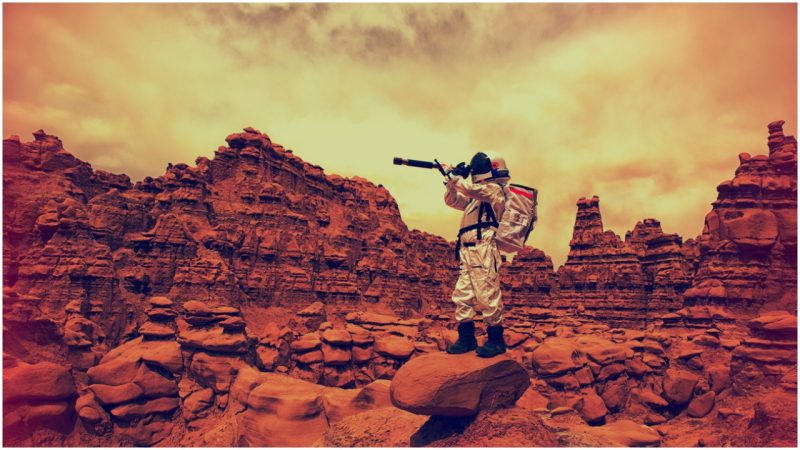Hawaii, a paradise of hula dancers, year-round flowers, and big surf.
But what if, for the better part of a year, you lived there never feeling the sun on your skin or the sand between your toes? The postcard life was intentionally absent for teams of scientists and engineers who have taken part in a special program there.
For eight months at a time, various teams of six scientists and engineers have lived and worked nonstop under a white 36-foot-diameter dome at the base of an active volcano. The experiment is part of a NASA-backed program to study how life on a Martian base might impact them. They only come out of their stark structure in full space suits for occasional “exploratory” programs–to conduct geological surveys and mapping studies, for instance.
It doesn’t take a rocket scientist to predict one aspect of the close quarters, and for some, suffocating conditions.
“If you put six people together in a stressful situation, there will be conflict,” James Bevington, who finished his self-imposed quarantine in September 2017, told reporters.

Participants like Bevington are highly motivated volunteers, even knowing what they are getting into in the HI-SEAS, or Hawaii Space Exploration Analog and Simulation program.
Inside, they cannot so much as crack a window for a breath of fresh air in the 1,200-square-foot enclosure. That’s about the size of a two-bedroom home, leaving 200-square-feet per person of combined living and workspace. But it’s also what they might expect in a combined lab and living quarters on Mars.
NASA felt the dome-life scenario was a more realistic way to explore the potential physical and psychological trials of someday putting people on Mars. The results will help the agency choose space travelers best-suited for the isolation of two or three-year trips to Mars.
The agency hopes to begin those trips by the 2030s.
Under the Hawaiian dome, it’s not just the claustrophobia of cramped quarters and lack of fresh air that can dampen participants’ spirits. They also face additional challenges of restricted power supplies and limited contact to the outside world–even through the internet. Information that normally could be found quickly could take days on Mars. Simple emails between the planets can be delayed up to 24 minutes each way. Skype and Google? Forget it.
Preparing for the self-imposed quarantine is its own journey for participants. They each have to figure out what they personally need and then pare it down based on available space. They also have to figure out supplies for their studies under the dome and make sure there’s room. And if something breaks–or breaks down–it helps to have MacGyver-like skills to put together an alternative.
Trying to focus while others were constantly around was cited as a hardship. And in spite of their close quarters, showers were a luxury limited to two minutes once a week. Meals? Ugh. Mostly freeze-dried, packaged stuff. For exercise and to combat the inevitable stagnation of the brain, a treadmill was provided.
Bevington, who was the commander in the fourth HI-SEAS mission, said his team learned how to deal with the inevitable clashes in a way that diffused escalation.
“We realized it was two people versus the thing in between them, rather than two people against each other.”
And when it was time for him and his crew to leave the dome, Bevington admitted to mixed feelings–in spite of the prospect of waiting friends and family, fresh air, fruit and sunshine.
“You’re leaving the people who have been by your side 24/7, and you’re walking into a whirlwind,” he told reporters waiting outside to hear about the experience.
Terri Likens‘ byline has appeared in newspapers around the world through The Associated Press. She has also done work for ABCNews.com, the BBC, and magazines that include High Country News, American Profile and Plateau Journal. She lives just east of Nashville, Tenn.
